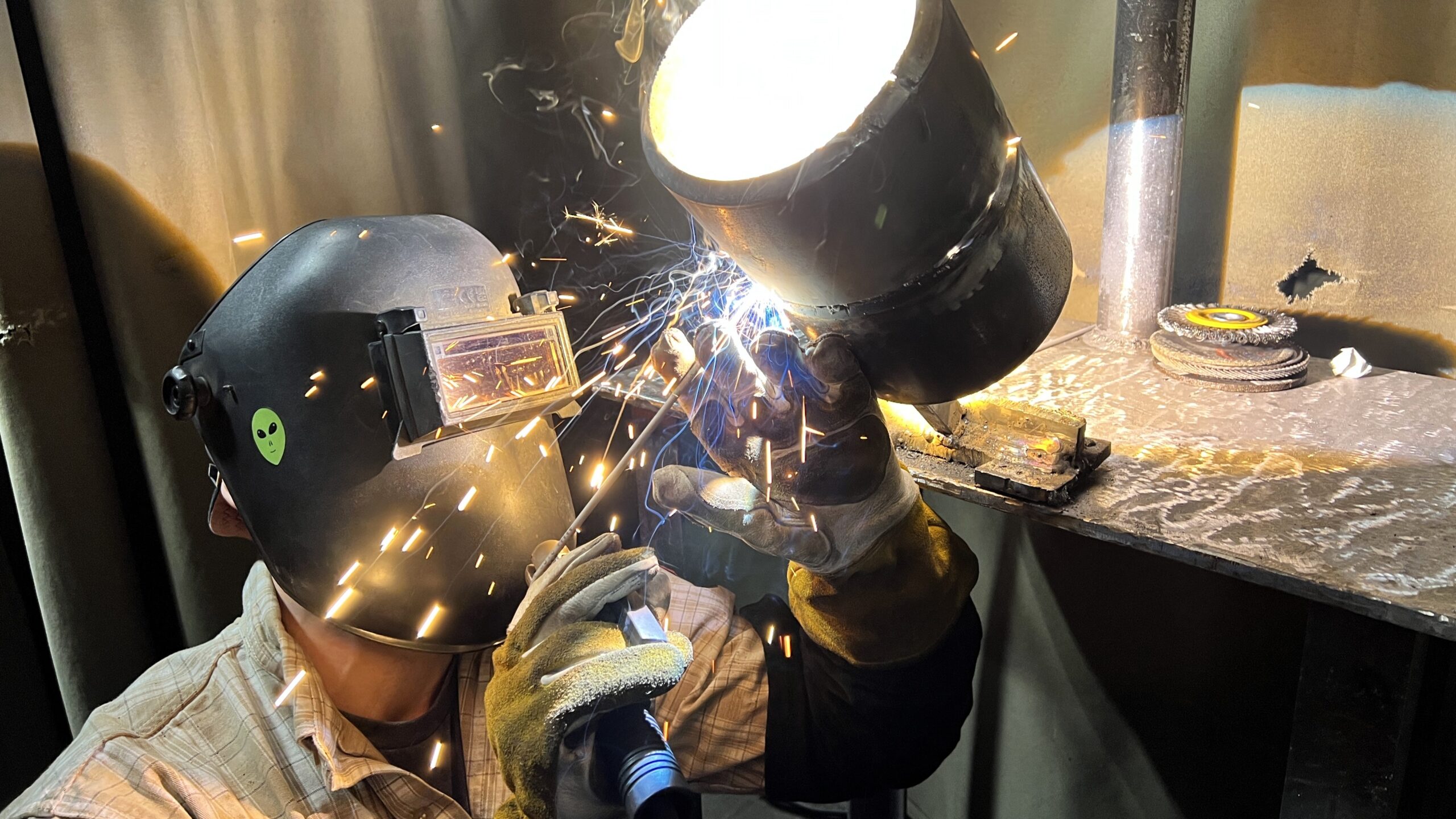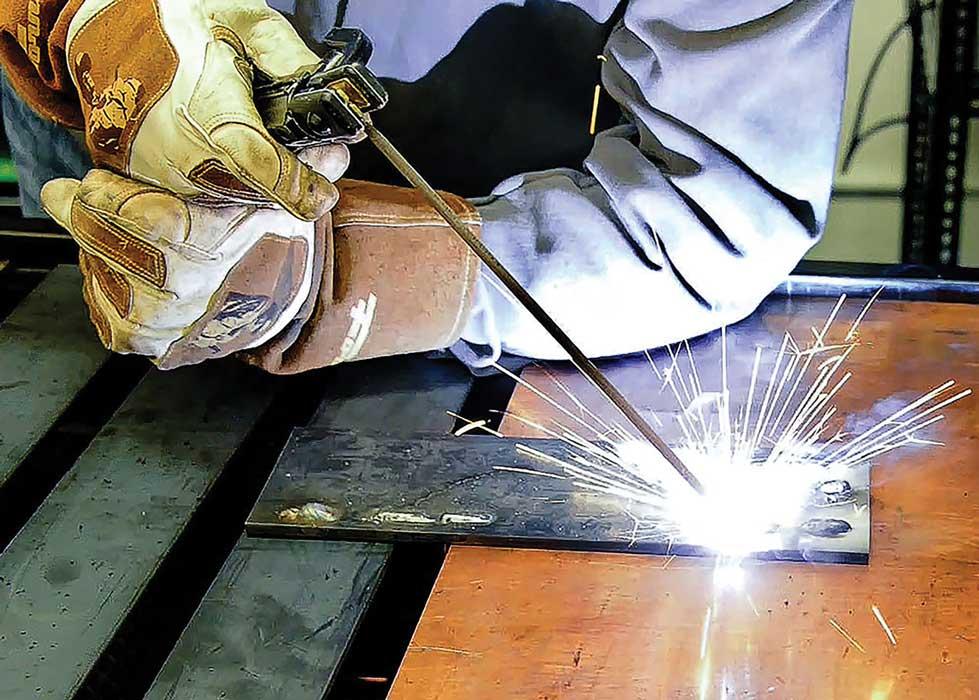Typical Welding Repair Service Issues and How to Address Them Successfully
Welding repair services often run into a variety of concerns that can jeopardize the integrity of the end product. Common troubles consist of insufficient penetration, porosity, and misalignment, to name a few. Each flaw provides special obstacles that require details approaches for resolution. Comprehending these issues is necessary for welders intending to boost their abilities and end results. This discussion will discover these typical welding repair service problems and reliable methods to address them.
Insufficient Penetration
Poor infiltration happens when the weld steel stops working to totally fuse with the base product, causing weak joints and potential architectural failings. This problem usually comes from inadequate warmth input, wrong electrode angle, or incorrect welding rate. Welders may experience poor penetration due to a miscalculation of the essential specifications for a particular product density or type. Additionally, contamination on the base material's surface can impede effective bonding, intensifying the trouble. To attend to poor infiltration, welders need to assure appropriate settings on their tools and keep a clean job surface area. Normal inspection of welds is suggested to identify any deficiencies early, allowing for prompt corrections and the prevention of endangered structural stability in welded assemblies.
Porosity
Porosity is a typical flaw in bonded joints that manifests as tiny gas bubbles entraped within the weld steel. This flaw can endanger the honesty of the weld, leading to decreased strength and prospective failing under anxiety. Belgrade Welding. Porosity typically arises from contamination, dampness, or inappropriate welding techniques, which enable gases to run away right into the molten weld swimming pool. To address porosity, welders must ensure proper surface preparation, preserve a clean working setting, and make use of ideal welding specifications. Furthermore, choosing the right filler material and securing gas can mitigate gas entrapment. Routine examination and screening of welds can help determine porosity early, assuring prompt rehabilitative actions are taken, consequently maintaining the quality and reliability of the bonded structure
Misalignment
Misalignment in welding can arise from different aspects, including incorrect setup and thermal expansion. Recognizing the origin is essential for efficient resolution. Several correction strategies are offered to straighten elements and guarantee architectural honesty.
Root causes of Misalignment
Welding imbalance often originates from a range of underlying problems that can endanger architectural honesty. One main reason is improper fit-up of parts prior to welding, which can cause voids and irregular surface areas. Variations in thermal expansion throughout the welding process can additionally result in distortion, especially if the materials being signed up with have different coefficients of growth. In addition, inadequate clamping and fixturing may fail to hold components securely in position, resulting in activity throughout welding. Badly conserved equipment, consisting of welding machines and devices, might introduce incongruities in the weld bead, additional adding to misalignment. Driver mistake, stemming from insufficient training or experience, can additionally play a considerable role in developing misaligned welds.

Adjustment Strategies Readily Available
Attending to misalignment successfully needs a combination of rehabilitative methods tailored to the particular problems at hand. One common approach is using components or jigs to hold parts in the appropriate position during welding, making certain regular alignment. In addition, preheating the materials can help in reducing distortion and boost fit-up. For considerable misalignment, mechanical realignment methods, such as using hydraulic jacks or clamps, can be used to remedy the placement prior to welding. Post-weld warmth therapy may also be necessary to alleviate anxieties triggered by imbalance. Finally, careful examination and modification during the configuration stage can protect against misalignment problems from ending up being significant issues, promoting a smoother welding process and enhancing general architectural stability.
Distortion
Distortion is an usual obstacle in welding that can emerge from different elements, consisting of irregular home heating and air conditioning. Comprehending the causes of distortion is crucial for applying effective prevention methods. Resolving this issue not just enhances architectural integrity however likewise improves the overall top quality of the weld.
Causes of Distortion
When subjected to the extreme warm of welding, materials usually go through changes that can lead to distortion. This phenomenon mainly arises from thermal expansion and contraction during the welding procedure. As the weld location warms up, the product expands; upon air conditioning, it contracts, which can develop internal tensions. Furthermore, irregular home heating across a workpiece can aggravate these anxieties, leading to bending or bending. The kind of product likewise plays a considerable function; metals with differing thermal conductivity and coefficients of expansion might respond in different ways, causing uncertain distortions. Poor joint style and inadequate fixturing can contribute to misalignment throughout welding, increasing the likelihood of distortion. Comprehending these reasons is essential for efficient welding repair service and prevention strategies.
Prevention Techniques
Efficient avoidance methods for distortion throughout welding focus on regulating warmth input and ensuring proper joint design. Keeping a regular heat input aids to reduce thermal growth and tightening, which can lead to distortion. Making use of strategies such as pre-heating the workpiece can also reduce the temperature slope, advertising consistent home heating. In addition, choosing ideal joint designs, such as T-joints or lap joints, can enhance security and lower anxiety focus. Applying appropriate fixturing to secure the work surfaces in position better help in maintaining alignment during the welding process. Finally, staggered welding sequences can distribute heat more uniformly, avoiding local distortion. By applying these methods, welders can substantially reduce the probability of distortion and enhance the general quality of their welds.
Fracturing
Cracking is a typical problem encountered in welding repair work, frequently resulting from numerous factors such as improper cooling prices, product selection, or poor joint preparation. The incident of cracks can substantially jeopardize the honesty of the weld, bring about prospective failures throughout operation. To address this problem, welders need to first examine the origin, guaranteeing that products are compatible and suitably picked for the details application. In addition, regulating the cooling price throughout the welding procedure is important; quick cooling can cause anxiety and bring about fracturing. Correct joint style and prep work also add to lessening the risk. Carrying out these strategies can improve weld quality and resilience, eventually lowering the chance of cracking in completed weldments.

Insufficient Fusion
A substantial issue in welding repair work is insufficient blend, which occurs when the weld metal does not sufficiently bond with the base material or previous weld passes - Montana Mobile Welding and Repair Belgrade. This flaw can lead to weak points in the joint, potentially endangering the honesty of the welded framework. Elements adding to insufficient combination consist of insufficient warmth input, improper welding method, and contamination of the surfaces being signed up with. To resolve this issue properly, welders should assure appropriate pre-weld cleaning and surface area preparation, along with adjust their welding criteria to achieve ample penetration and fusion. Routine evaluation throughout the welding procedure can additionally help identify incomplete fusion early, enabling timely restorative actions to improve the general top quality of the link weld
Overheating
While welding repair services can enhance structural stability, overheating provides a significant difficulty that can cause product deterioration. Extreme warmth during welding can change the mechanical properties of steels, causing lowered toughness, raised brittleness, and bending. This sensation is especially essential in high-stress applications where architectural dependability is critical. Identifying overheating can involve aesthetic assessments for discoloration This Site or distortion, as well as checking temperature level throughout the welding process. To alleviate the dangers related to overheating, welders ought to utilize ideal techniques, such as controlling warmth input, readjusting traveling speed, and utilizing ideal filler products. In addition, carrying out pre- and post-weld warmth therapies can assist restore product buildings and improve the general quality of the repair work, ensuring long-term efficiency and safety and security.
Often Asked Questions
What Are the Usual Indications of a Welding Defect?

Exactly How Can I Check My Welds for Quality?
To examine welds for top quality, one can make use of visual inspections, ultrasonic testing, and radiographic techniques. Each strategy assures architectural stability, identifies problems, and confirms adherence to specified standards, eventually enhancing the integrity of the bonded joints.
What Safety Precautions Should I Take While Welding?
When welding, one ought to focus on security Find Out More by wearing appropriate individual protective devices, making sure appropriate ventilation, protecting combustible products away, maintaining a tidy work space, and recognizing environments to stop injuries and crashes.
Can I Fix a Weld Without Redesigning the Entire Joint?
Repairing a weld without redesigning the whole joint is possible, depending upon the damage (Montana Mobile Welding and Repair Belgrade Fabrication). Techniques such as grinding, adding filler product, or making use of a welding procedure can properly attend to particular problems while preserving the surrounding framework
What Tools Are Vital for Efficient Welding Repairs?
Necessary devices for effective welding repair work include a welding machine, cord brush, mill, safety gear, clamps, and filler materials. Each device plays a crucial function in making sure quality and security during the repair process. Porosity usually arises from contamination, wetness, or inappropriate welding methods, which allow gases to leave right into the molten weld swimming pool. Poorly kept equipment, including welding devices and devices, may introduce inconsistencies in the weld grain, further contributing to imbalance. When subjected to the intense warmth of welding, materials often undergo adjustments that can lead to distortion. Cracking is an usual concern experienced in welding repair services, commonly resulting from numerous factors such as inappropriate cooling rates, material selection, or inadequate joint prep work. A considerable problem in welding repair services is incomplete blend, which occurs when the weld metal does not appropriately bond with the base product or previous weld passes.
Comments on “Overlooked causes of weld misalignment and Belgrade Fabrication’s methods”